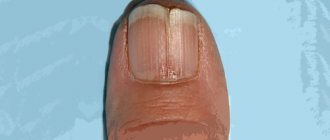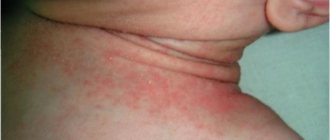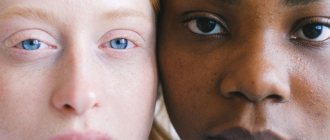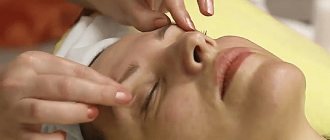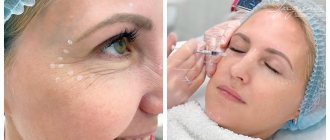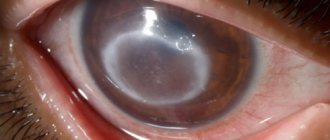Associated symptoms
Itching can manifest itself in different forms. Some patients' eyes itch a little, others experience a strong burning sensation, which is accompanied by pain, discomfort and other characteristic symptoms.
Itching with redness
In almost all cases, itching in the eyes is accompanied by redness of the surface of the whites or eyelids. The appearance of redness can inform the doctor about the presence of an allergic reaction or the development of an ophthalmological disease.
When itching with redness of the cornea, the patient is usually diagnosed with conjunctivitis. The disease is accompanied by increased sensitivity to light, blurred vision, and a feeling of sand in the eyes. The skin around the eyes begins to turn red. Mucous discharge appears on the eyelids, which dries out and remains in the form of crusts.
With allergic conjunctivitis, the mucous membrane turns red and a runny nose may develop. Symptoms occur when allergens enter the body.
Itching with swelling
Swelling around the eyes is a common symptom of an allergic reaction. For example, if itching and swelling are observed frequently and are caused by certain foods, the patient needs to completely reconsider the diet.
Itching with peeling
Peeling of the skin can inform the doctor that the patient has demodicosis. This is a disease in which the sebaceous glands are affected by mites.
The skin turns red around the eyes, around the lips, and on the chin. Symptoms become more pronounced when working at a computer.
Itching in the eyes and ears
If the eyes itch or there is discomfort in the ears, the patient needs to be checked for the presence of microscopic mites.
About 80% of people encounter them. Ticks spend most of their time in passive mode and do not bother humans. Their activity begins when the immune system is weakened and other diseases appear.
Itching with dryness
Dryness of the mucous membrane may indicate dry eye syndrome. It is usually accompanied by itching, burning, fear of light and rapid fatigue of the patient. Sometimes there are crusts in the corner, slight redness of the conjunctiva. The eye begins to hurt.
The feeling of dryness becomes stronger in sunny or windy weather, weakens in humid and warm air.
Itching with runny nose
With a runny nose, redness of the mucous membrane is common. Sometimes there is discharge from the eyes: at first it is transparent, gradually pus is mixed with it. Swelling of the nasal mucosa with dark circles around the eyes indicates the presence of infection.
Itching in the ears, eyes, throat and palate is a symptom of inflammation of the mucous membranes or allergic rhinitis.
Severe itching
Very severe itching in the eyes is caused by various ophthalmological diseases, such as keratoconjunctivitis. It affects the conjunctiva of the eyelid and the eyeball. It is accompanied by hard and dense growths on the eyelids, most often on the upper ones. In addition, photophobia, lacrimation, and viscous discharge may be present.
With pathology of the conjunctiva, the cornea becomes gray and hypertrophied, pain appears due to damage to the epithelium.
Localization of itching
Symptoms and causes can be divided according to their location.
In the eyelid area
The main reason is hyperemia caused by eye irritation upon contact with household chemicals, dust, and pet hair. Itching on the eyelids may occur after eating certain foods, such as chocolate. In this case, the doctor may refer the patient for an allergen test.
Women may experience itching due to low-quality cosmetics that contain prohibited ingredients. When they get on the skin of the eyelids, eyelashes or mucous membranes, they cause irritation and itching.
In the corner of the eyelids
Occurs due to the activity of bacteria or viruses. Redness of the eyes appears, increased lacrimation begins, and a burning sensation in the corner of the eyelid. Main reasons:
- barley;
- allergy;
- microtrauma or foreign body entry;
- exposure to chemicals;
- Using contact lenses for too long.
In rare cases, only the skin in the corner of the eye itches and hurts. This may indicate the development of conjunctivitis. However, most often with this disease, unpleasant sensations immediately affect the entire mucous membrane and eyelids.
Under the eyes
Demodicosis and blepharitis lead to itching in this area. Demodectic mange is caused by a mite living in the eyebrows and eyelashes. Blepharitis is a bacterial infection affecting the edges of the eyelids, which requires long-term painstaking treatment. Severe discomfort occurs with a sebaceous gland cyst.
Swelling may appear under the eyes. In this case, the cause of the itching is an allergic reaction.
Around eyes
The causes are often caused by external factors. Due to the activity of snow or wind, the skin dries out and cracks appear on it.
Itching around the eyes causes allergic dermatitis, which occurs when using low-quality cosmetics or inappropriate medications. Other causes include blepharitis, herpes, or an insect bite.
Fantasy specialists in pediatric ophthalmology
Bondar Vadim Andreevich - pediatric ophthalmologist. One of the best children's ophthalmologists in Moscow. Specialist in rare eye diseases. Diagnostics and treatment according to the principles of evidence-based medicine. The doctor has 16 years of experience in the treatment of eye diseases, a number of publications on ophthalmology, and active scientific activity in this direction.
Bogorad Maria Vladimirovna is a pediatric ophthalmologist. First category doctor. More than 17 years of experience (MC of the Administration of the President of the Russian Federation, Helmholtz Moscow Research Institute of GB in the emergency department. In treating patients, he is guided by the principles of evidence-based medicine.
Tolmacheva (Ermoshkina) Klavdiya Georgievna - pediatric ophthalmologist. The doctor's specialization: routine examinations of children of all ages, correction of myopia, farsightedness, and astigmatism. Treatment for retinal pathology. Prevention of eye diseases in children. Diagnostics and treatment according to the principles of evidence-based medicine.
Redness and peeling of the skin around the eyes causes severe itching. This symptom may indicate an allergic reaction, inflammation or other skin disease. After diagnosis, the dermatologist carries out treatment. It involves external treatment of lesions and the implementation of drug therapy.
Pathogenic causes
This group includes pathologies caused by weak immunity, allergies, bacterial or viral infections, and parasites.
Allergic reaction
The body's reaction to allergens that irritate the mucous membrane. It most often occurs in the spring, when plants begin to bloom and a huge amount of allergens enter the air. Because of them, the eyes begin to dry out and itch from the inside. Certain foods can cause a reaction: milk, eggs, chocolate, citrus fruits, pomegranates or strawberries.
Taking certain medications can also lead to allergy symptoms. These include antibiotics, vitamin complexes and preparations containing iodine. In women, allergies can be caused by incorrectly selected cosmetics.
Diagnosis of allergies is carried out using a series of laboratory tests that can pinpoint the cause of the discomfort. After this, the doctor selects antihistamines.
To prevent itching, you can wash your eyes with special drops several times a day. This reduces contact of the mucous membrane with allergens.
Conjunctivitis
Inflammation of the mucous membrane, which is based on an allergy or infection. The infectious form is usually caused by viruses or bacteria, very rarely by a fungus. The disease can be transmitted from person to person through contact.
With conjunctivitis, itching is the first sign that requires you to consult a doctor to select treatment. During therapy, local antiviral or antibacterial drugs are used in the form of eye drops or ointments.
Blepharitis
Inflammation of the eyelids caused by anemia, diseases of the digestive system, diabetes, infection and other pathologies. As blepharitis develops, the refractive function of the eyes deteriorates, causing concomitant pathologies, such as farsightedness, to appear. The patient has a desire to scratch his eyelids, swelling forms.
The disease is accompanied by the formation of small scales or ulcers along the edges of the eyelids. Treatment of blepharitis takes a long time and, in addition to getting rid of the symptoms, includes eliminating the causes of its development.
Demodicosis
Damage to the skin by the parasitic demodex mite. The activity of the parasite leads to itching from the inside, pain and itching of the eye. The main method of treatment involves the use of gels or ointments that reduce the activity of the parasite.
Dry eye syndrome
Causes dryness and swelling of the mucous membrane, itching. The patient feels as if sand has gotten under his eyelids, which is why he begins to rub his eyes frequently, aggravating the condition. The syndrome is caused by a lack of tear production.
Dry eye syndrome is usually experienced by older people; it occurs in them 65-70% more often than in younger patients. Recently, the problem has been encountered among office workers who spend a lot of time in front of a monitor screen in an office with dry air. The syndrome is also caused by chemical or thermal burns and adenoviruses.
Barley
Purulent inflammation of the sebaceous gland of the eyelid or eyelash follicle. Develops against a background of reduced immunity, severe hypothermia, and frequent stress.
The infection penetrates the gland or hair follicle, after which pus formation and inflammation begin. First, a small itchy dot appears on the edge of the eyelid, painful when touched. Gradually, the tissues around it swell, redness appears, and the head of an abscess forms. After opening it, pus and dead tissue are released.
To treat stye and reduce itching, the doctor selects antibacterial ointments and drops and prescribes therapy to strengthen the immune system.
Demodicosis
Scaly blepharitis is a manifestation of demodicosis. This disease is caused by ticks and is seasonal. It manifests itself as an acne-like rash covering the forehead and cheeks, inflammation of the eyelids and flaky skin of the eyebrows.
Treatment of demodicosis takes from one to three months. Special disinfectants are used that relieve inflammation and cleanse the skin. Therapy includes drugs that improve immunity and vitamins. In advanced cases, antibiotics and anti-inflammatory drugs are used.
Regular skin care will help prevent and alleviate the disease. You need to choose cleaning and degreasing products. For cleansing, lotions, chemical peels, scrubs and gommage are used. During treatment, avoid hot procedures such as sauna, steam bath, cosmetics with a warming effect and masks with honey.
The next stage of care is moisturizing. The most suitable are products containing hyaluronic acid.
Non-pathogenic causes
These are reasons that are caused by third-party factors, for example, environmental features or incorrect actions of the patient.
Swimming in reservoirs
This is a common cause of infection by viruses, bacteria and mites. Their activity causes itching in the corners of the eyes, under or on the eyelids. Most often, diseases develop in the summer months, when microscopic algae begin to actively multiply in the water. If they come into contact with the eyes, they cause a number of unpleasant symptoms.
The reaction can also begin when swimming in a pool. Chlorinated water negatively affects the condition of the mucous membranes, causing itching.
Ultraviolet burns
Strong ultraviolet radiation can provoke pain and itching. You can encounter it when visiting a solarium without protective glasses, when watching the sun. A retinal burn can be caused by an electric welding process that uses a powerful light beam.
Blocked tear duct
Burning and itching in the eyes often occurs when the tear ducts are blocked by burning particles or fine dust.
There is an easy way to deal with blockage: just pinch the dots at the inner corners of your eyes for a few seconds. Usually after this, tears begin to flow, clearing the tear ducts. If this does not happen, you should consult a doctor.
Which doctor treats itching?
Pathology is the responsibility of an ophthalmologist (ophthalmologist). He conducts an initial examination and makes a preliminary diagnosis. The patient may need help from doctors of other specialties, such as an allergist, endocrinologist, gastroenterologist and others. In this case, treatment will be prescribed not only to get rid of the symptoms, but also to eliminate the underlying disease.
Diagnostics
During the consultation, the doctor examines the patient’s complaints and collects his medical history and conducts a physical examination. He selects diagnostic methods to determine why the eyelids and area around the eyes itch. These include:
- Clinical blood test
- Allergy tests
- Microscopic analysis of eyelashes
- Bacteriological analysis of eyelid scrapings
If the cause of itching lies in a systemic disease, the doctor may prescribe additional diagnostic procedures. They will help you find out why your eyes itch and how to eliminate the risk of recurrence of symptoms.
What not to do
When your baby's eyes are red, it is important to take the following precautions:
- Do not touch the child's eyes - this will create additional conditions for injury to blood vessels. Try to make sure that he does not have the opportunity to touch the visual organs with his hands.
Do not cover the affected eye with bandages.
Do not use any remedies without your doctor’s permission—neither folk nor traditional medicines.
- Myopia in children is weak, moderate and strong.
Farsightedness - why does the disease occur and how is it treated?
An integrated approach to the treatment of amblyopia in children of different ages.
Chalazion - causes and symptoms of the disease.
Treatment for itchy eyes
If itching occurs, you can apply cold or warm compresses. They soften hard crusts on the eyelids and reduce the appearance of swelling. You can only touch your eyes with pre-washed hands!
The doctor selects special drops and ointments to eliminate itching and other symptoms. They moisturize the mucous membrane, reduce its irritation and inflammation. The ointments may contain a broad-spectrum antibiotic that is effective in fighting infection. It relieves inflammation and irritation. Eye drops, such as Gilan, work well.
If the discomfort is caused by a systemic disease, the doctor determines how to get rid of itchy eyes with the help of drug therapy and prescribes medications to relieve symptoms.
Eye drops
A good choice is eye drops that are aimed at getting rid of the main signs of ophthalmic diseases.
Drops are suitable for the treatment of acute and chronic inflammation, prevention of eye diseases. They relieve irritation, eliminate itching and redness. May have antiallergic and anti-inflammatory effects. They are often used to improve the condition of the eyes after injuries, surgery, and infectious pathologies.
Pay attention to Gilan drops. They contain hyaluronic acid, which has a long-lasting, pronounced moisturizing effect. It facilitates the patient’s condition when he frequently spends time behind a monitor screen or while driving. The drug can be used by children and pregnant women.
The use of antibiotics is permissible only after a doctor’s prescription! Long-term uncontrolled use of the compounds can lead to lens clouding, glaucoma or dry eye syndrome. Before starting treatment, it is necessary to find out why the eye itches.
How to eliminate itching yourself?
First of all, you should determine why the skin around the eyes and eyelids constantly itch. If the cause is not related to serious illnesses, you can use home treatment methods.
What is recommended to do if there is severe itching in the eyes?
First, give your eyes a rest. To do this, you need to remove your lenses or glasses, wash off your makeup, and turn off your computer and TV. You can cover your eyelids with your palms for a few minutes and look at a distant point. If your eyes are very itchy, it is advisable to rinse them with boiled water or saline solution, strong tea or a decoction of medicinal herbs. It is better to keep drops on hand to moisturize the mucous membranes, which can be bought at any pharmacy. If the itching is caused by allergies, antihistamines will help relieve the condition. To speed up the process, you can use eye drops that moisturize the mucous membrane and relieve irritation.
A few simple exercises
- If you feel tired, close your eyes tightly for 3 seconds.
- Blink frequently for 30 seconds.
- Roll your eyes in a circle for 20 seconds.
- Close your eyes and cover them tightly with your palms for 5 seconds.
Useful tips
To avoid causing dry skin around the eyes, you don’t need to do anything complicated.
However, it is important to adhere to certain rules
Recommendations for preventing dry skin around the eyes are as follows:
maintain a drinking regime, drinking at least one and a half liters of clean drinking water daily; use high-quality, age-appropriate cosmetics. Avoid creams and gels with strong fragrances and dyes, switch to light moisturizers; if dryness is caused by allergies, choose not only hypoallergenic cosmetics, but also a hypoallergenic diet, eliminating all potentially dangerous products; Take care of your eyelid skin every day, thoroughly wash off your makeup before going to bed at night.
In some cases, dry skin is caused by a lack of vitamins A, C, B, D. B, E. In this case, on the recommendation of a doctor, you should buy a vitamin-mineral complex, successfully balanced in composition, and drink it in a course to replenish the deficiency of nutrients.
Skin after 35 years can be preventively nourished with grape seed oil. This product, unlike heavy, greasy creams, does not harm the eyelids and does not cause swelling or dryness. In addition, preference in care should be given to products that stimulate collagen production and contain hyaluronic acid.
By providing the skin around the eyes with proper care, maintaining water balance, normalizing nutrition and night sleep, you can cope with the problem of dryness, maintain beauty and restore health.
Prevention
- Regular hand washing. Many people have a habit of rubbing their eyes, so it is better to eliminate the risk of infection on the surface of the cornea in advance.
- Wearing sunglasses in sunny weather. They will protect the mucous membrane from exposure to ultraviolet radiation.
- Using computer glasses. They relieve eye strain when working at a computer.
- Regular warm-up. Improves eye well-being and helps them relax.
- Minimal contact with allergens.
